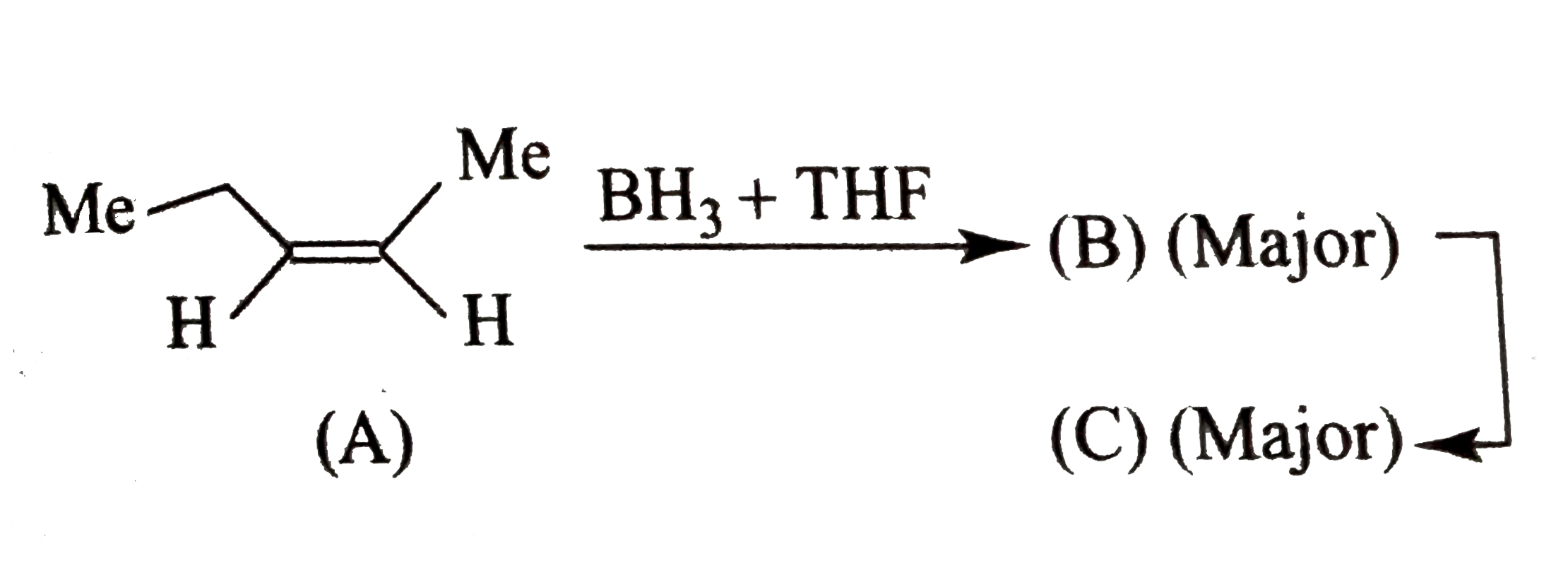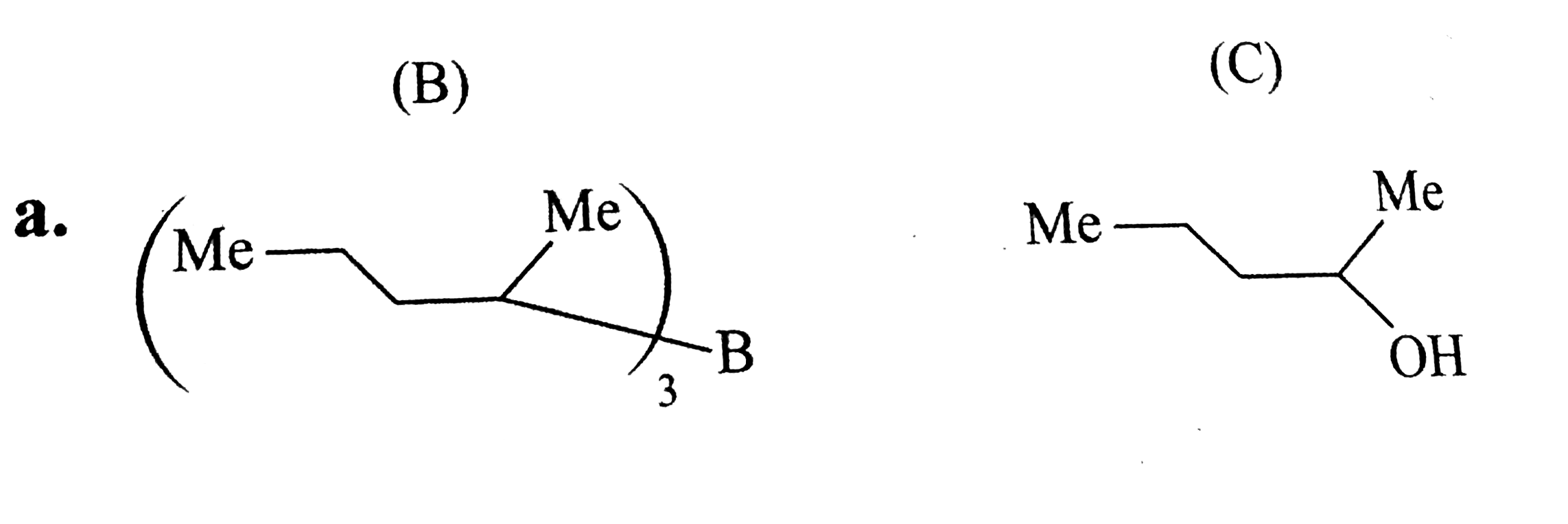What sort of informations can you draw from the following reaction?
(CN)2(g)+2ΘOH(aq)→CNΘ(aq)+CNOΘ(aq)+H2O(l)
(i) It is a disproportionate reaction .
(ii) The reaction occurs in basic medium .
O.N of N in (CN)2 is -3 and that in CN− is - 2 and in CNO− it is -5.
(iv) Cyanogen , (CN)2 gets simultaneously reduced toCN− ion as well as oxidised to cyanate, CNO− ion.
Topper's Solved these Questions
- REDOX REACTIONS BOOK - MODERN PUBLICATIONCHAPTER - REDOX REACTIONS EXERCISE - NCERT FILE Solved (NCERT - Exemplar Problems)) (Multiple Choice Questions (Type - I)
1 Videos
- REDOX REACTIONS BOOK - MODERN PUBLICATIONCHAPTER - REDOX REACTIONS EXERCISE - NCERT FILE Solved (NCERT - Exemplar Problems) (Multiple Choice Questions (Type - I)
10 Videos
- REDOX REACTIONS BOOK - MODERN PUBLICATIONCHAPTER - REDOX REACTIONS EXERCISE - Conceptual Questions
20 Videos
- ORGANIC CHEMISTRY: BASIC PRINCIPLES AND TECHNIQUESBOOK - MODERN PUBLICATIONCHAPTER - ORGANIC CHEMISTRY: BASIC PRINCIPLES AND TECHNIQUESEXERCISE - (Competition File) MULTIPLE CHOICE QUESTIONS ( based on the given. passage/comprehension )
8 Videos
- S-BLOCK ELEMENTS ( ALKALI AND ALKALINE EARTH METALS ) BOOK - MODERN PUBLICATIONCHAPTER - S-BLOCK ELEMENTS ( ALKALI AND ALKALINE EARTH METALS ) EXERCISE - UNIT PRACTICE TEST
13 Videos
Similar Questions
Knowledge Check
 H2O2+ΘOHA
H2O2+ΘOHA B
B C
C D
D
Which of the statements are correct about the following reactions ?
MeCHO+[Ag(NH3)2]⊕+ΘOH+→MeCOOΘ+AgAThe equivalent weight of MeCHO is 22.BThree moles of ΘOH are required in the above reaction.CMeCHO is an oxidising agent.DReduction of [Ag(NH3)2]⊕ occurs.Observe the following reaction,
2NO2(g)+2OH−(aq)→NO−3(aq)+H2O(l)+NO−2(aq) in this reaction,AOH− is oxidised to H2OBOH− is reduced to H2OCNO2(g) is reduced to NO−2 (aq) and oxidised to NO−3 (aq)DNO2(g) is reduced to NO−3(aq) and oxidised to NO−2 (aq)
Identify the substance oxidised substance reduced, oxidising agent, and reducing agent for each of the following reactions:
a. 2AgBr(s)+C6H6O2(aq)→2Ag(s)+2HBr(aq)+C6H4O2(aq)
b. HCHO(l)+2[Ag(NH3)3]⊕+3ΘOH(aq)→2Ag(s)+HCOOΘ(aq)+4NH3(aq)+2H2O(l)
c. HCHO(l)+2Cu2+(aq)+5ΘOH(aq)→Cu2O(s)+HCOOΘ(aq)+3H2O(l)
d. N2H4(l)+2H2O2(l)→N2(g)+4H2O(l)
d. Pb(s)+PbO2(s)+2H2SO4(aq)→2PbSO4(s)+2H2O(l)
View SolutionWhat are conjugate acids and bases ? Select the conjugate acid-base pair from the following reactions:
NH3(aq)+H2O(l)⇔NH+4(aq)+OH− (aq)
HCN(aq)+H2O(l)⇔H3O+(aq)+CN−(aq)
View SolutionWrite balanced ionoic half equation (oxidation and reduction) for each of the following reactions:
(a) Mn3+(aq)→MnO2(s)+Mn2+(aq)
(b) Mn(s)+NOӨ3(aq)→Mn2+(aq)+NO2(g)
(c ) H2O2(aq)+Fe2+(aq)→Fe3+(aq)+H2O(l)
(d) Te(s)+NOӨ3(aq)→TeO2(s)+NO(g)
View SolutionThe heat liberated in the following reaction
H+(aq)+OH−(aq)→H2O(l) is
View SolutionIn the reaction
H2O2(aq)I−−−→H2O(l)+12O2(g), where I− is
View Solution
